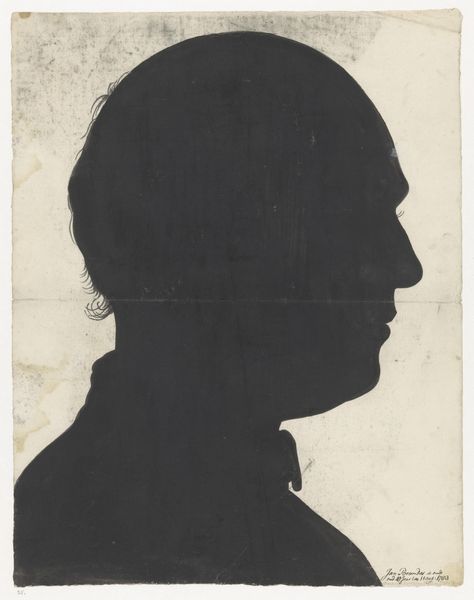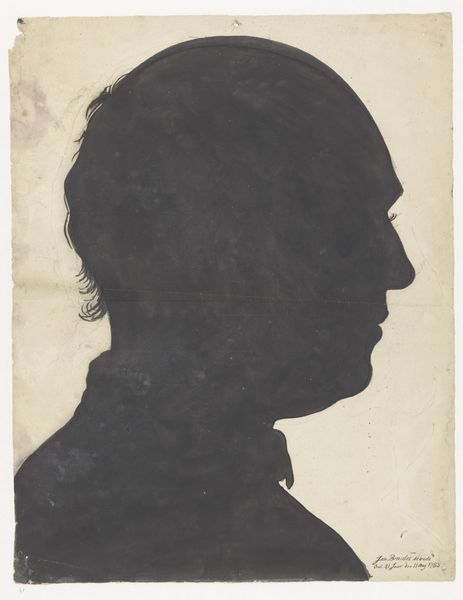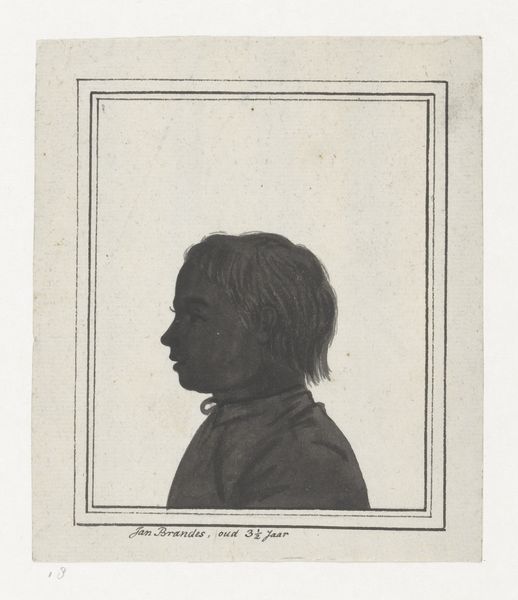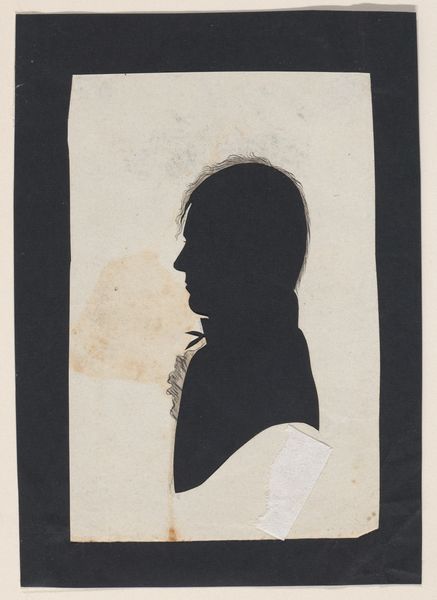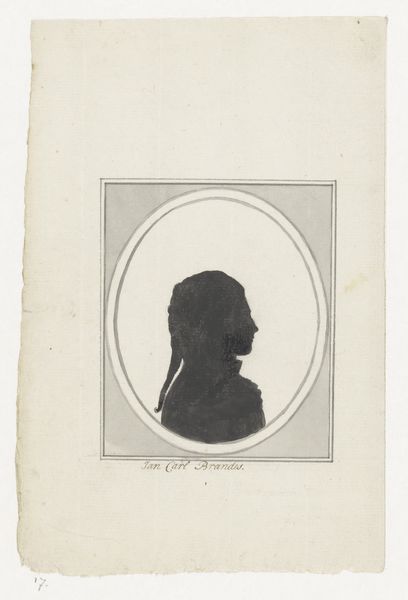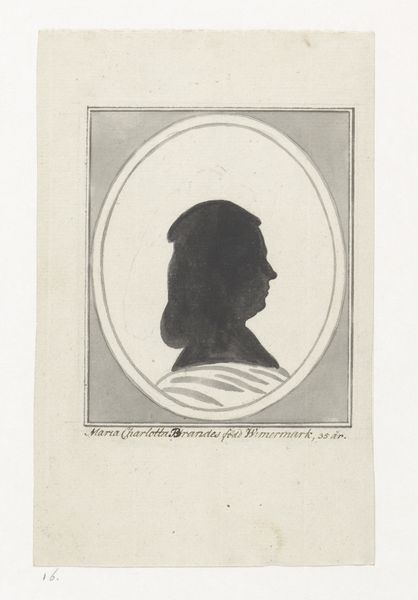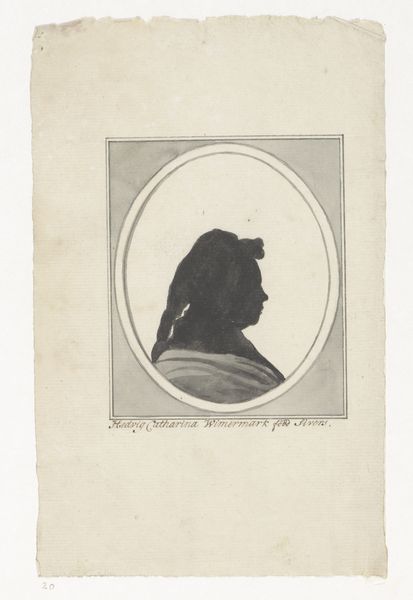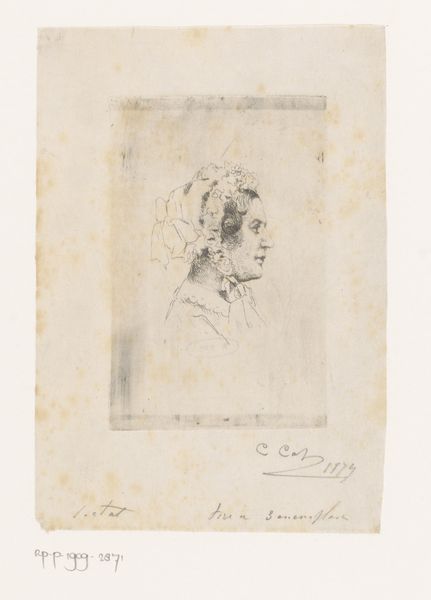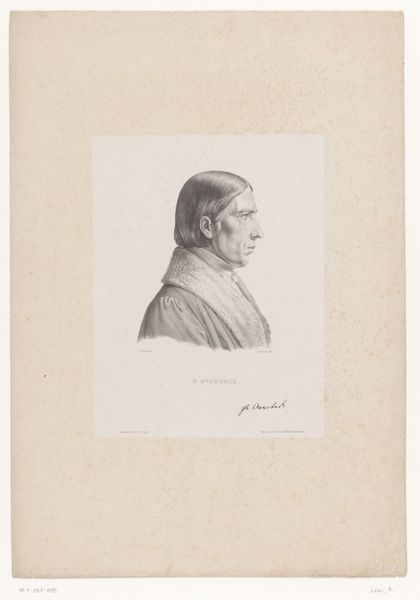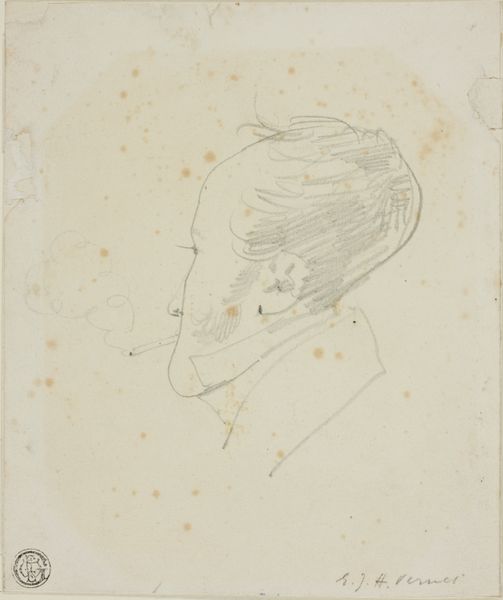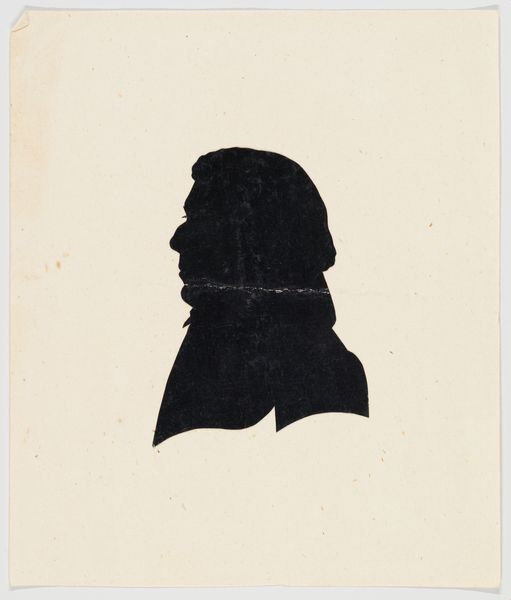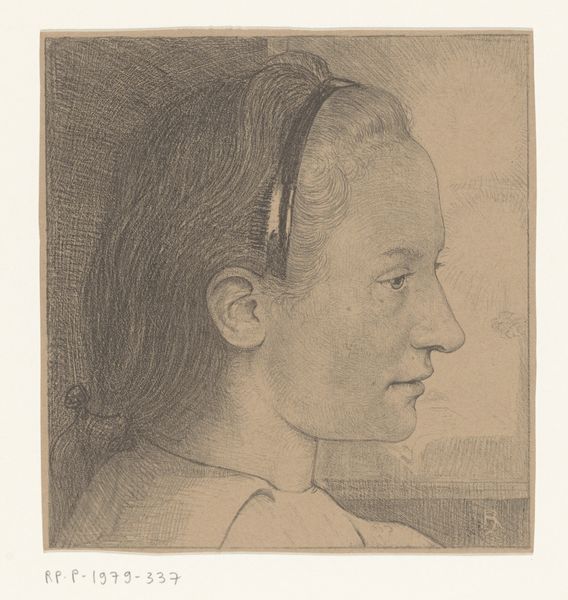
Dimensions: height 136 mm, width 123 mm
Copyright: Rijks Museum: Open Domain
Curator: Looking at this diminutive silhouette, one gets a sense of a bygone era, rendered in stark contrasts of ink on paper. Editor: Indeed, this ink drawing from around 1784 to 1785 has a surprisingly intimate and imposing presence for such a small portrait. It seems to loom, almost like a judgmental ancestor peering out. Curator: This is "Silhouetportret van Jan Brandes," a piece carrying layers of cultural meaning. Silhouettes such as this were a common form of portraiture. Notice how economical the image is—reducing a person to their most essential outline. Editor: Essentializing identity is loaded territory, though, isn't it? What does it mean to reduce a person, especially within the social context of the 18th century? The very act feels exclusionary, particularly considering silhouette’s links to ideas about criminality and physiognomy at that time. Curator: An interesting point. Here, Brandes is portrayed as an accomplished, erudite man. Note the classical bust-like presentation, how this shadow of a man is presented against a plain background reminiscent of ancient medallions or cameos, suggesting prestige and permanence. These stark portraits can take on deeper resonances within familial and cultural narratives. Editor: It brings up interesting questions, doesn't it, about accessibility? While silhouettes were more affordable than painted portraits, who still had the privilege to be represented, to leave a visual trace for posterity? The elite, invariably. It underscores the existing power dynamics in supposedly "egalitarian" artistic forms. Curator: Indeed. Yet I also wonder about its resonance in our present age saturated by photographs. Doesn't it almost evoke an emoji, an archetype of representation distilled down to its basic essence? In an age of endless imagery, what meaning persists here? Editor: Perhaps it speaks to our enduring desire for recognition and representation, regardless of medium. We continue to grapple with issues of visibility and power. And, you know, the artist reduces their sitter to a black mass. Given how race, ethnicity and class position affected opportunities of those living in Europe, I do wonder if the artist intended something by using exclusively black pigment. Curator: An unnerving yet illuminating observation. Thanks for expanding my interpretation of such deceptively simple image! Editor: Anytime! There’s just so much history and complexity buried even in seemingly minor works like this, I feel!
Comments
No comments
Be the first to comment and join the conversation on the ultimate creative platform.
